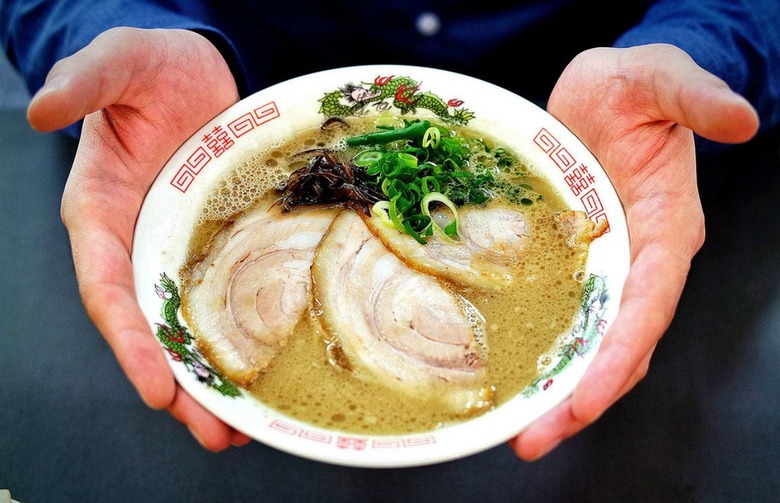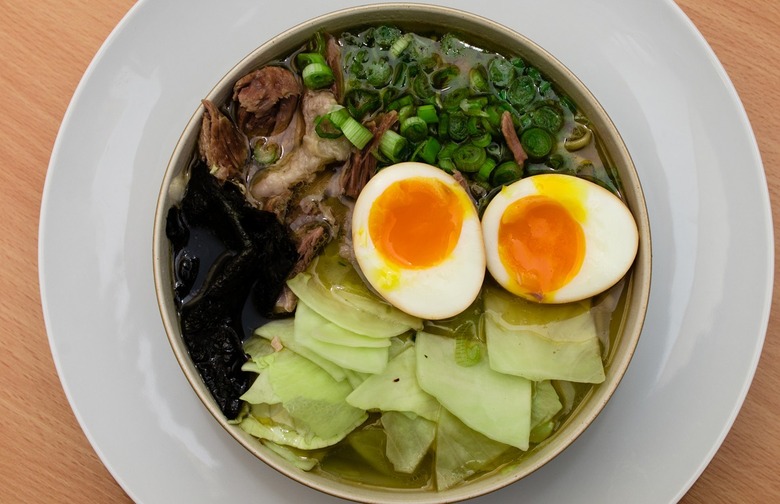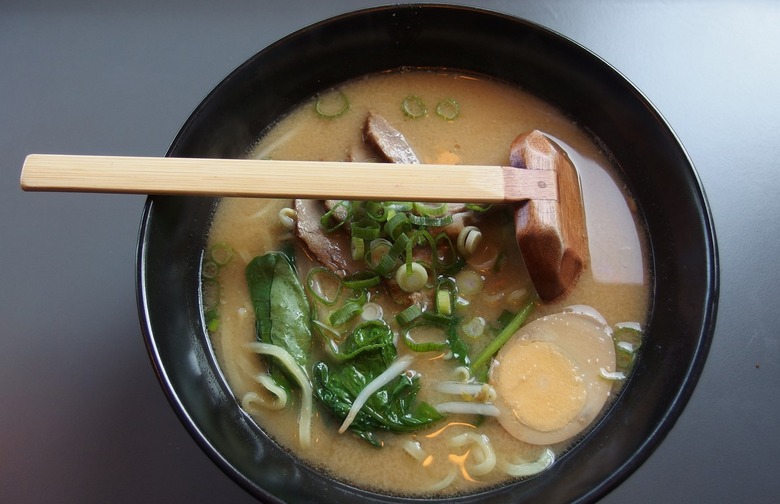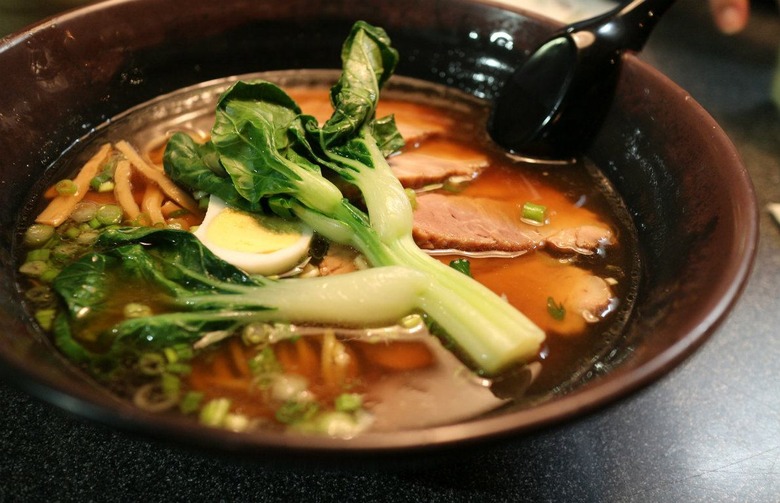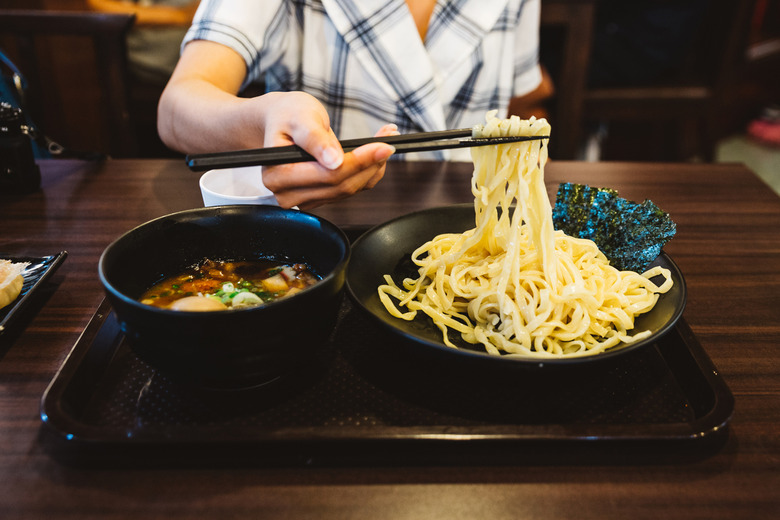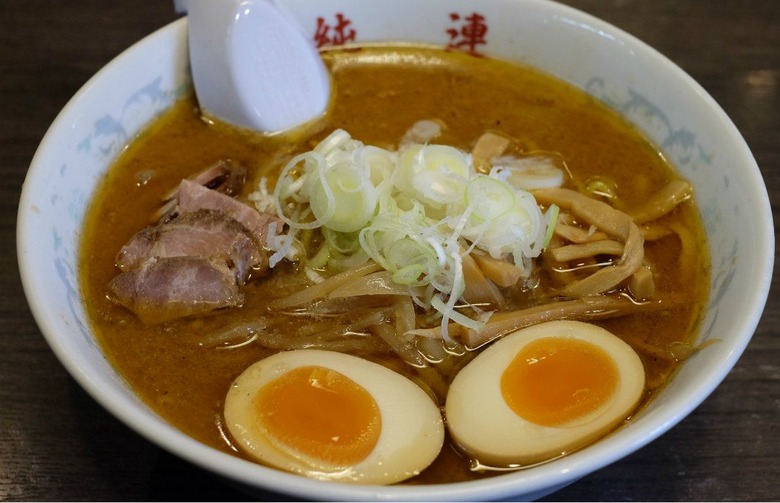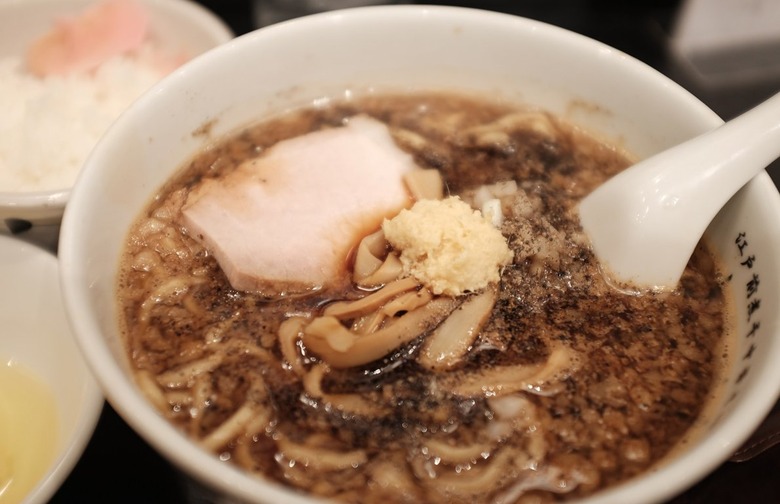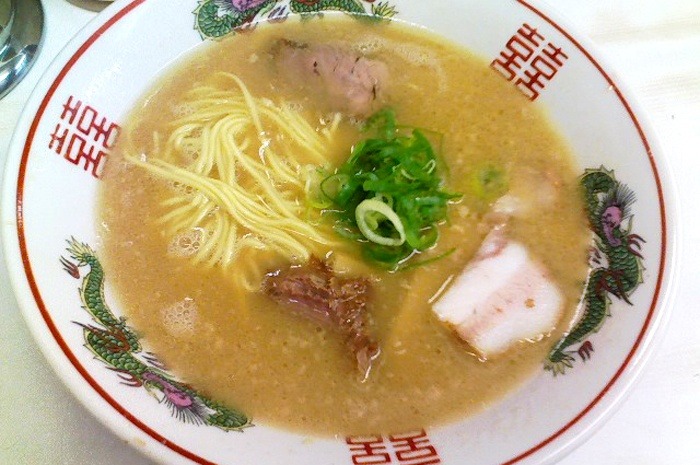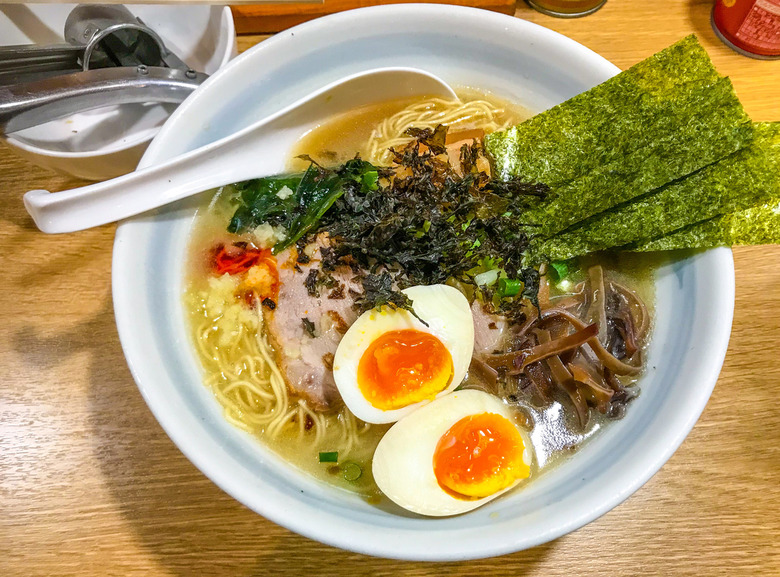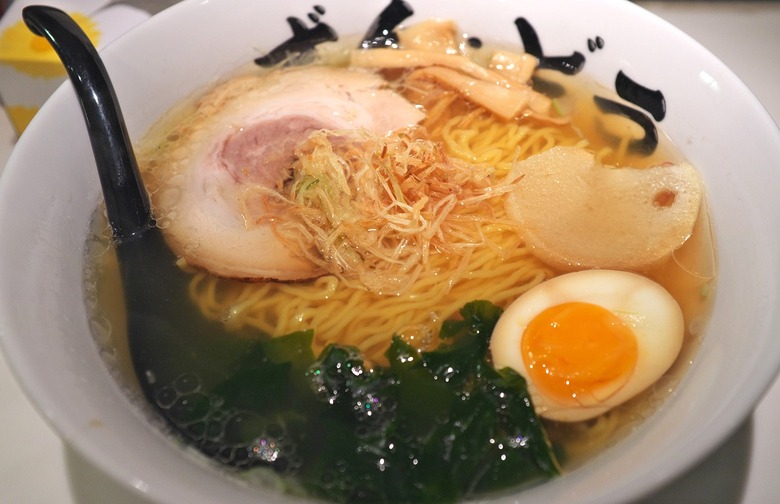A Beginner's Guide To Ramen Styles
For most of us, generic cup noodles have suddenly been replaced with a wide variety of delicious ramen recipes, and it can get a little confusing for those looking to take their first foray into this legendary and comforting dish.
Tonkotsu
The vast majority of ramen you'll find are tonkotsu, meaning that the broth is made from boiling pork bones for hours in order to extract their flavor. Tonkotsu broth has a milky hue and is rich and satisfying.
Shio
Shio, which literally translates to "salt," is lighter and less milky than tonkotsu. The stock is made with dried seafood and seaweed, making the end result briny and incredibly rich in umami.
Miso
If you've ever had miso soup, made with fermented bean paste, you'll be familiar with the flavor of miso ramen. Brown and rich, it's certainly high in umami, but lacks the unctuous texture of a tonkotsu ramen.
Shoyu
Shoyu translates to "soy sauce," and shoyu ramen is built with a soy sauce base. Many different varieties of ramen are based in shoyu, and they can be mixed with just about any variety of meat or stock.
Tsukemen
You'll probably also see tsukemen on the menu at ramen shops. While not exactly a bowl of soup, it's still a ramen style worth knowing. Order tsukemen and you'll receive noodles and soup separately. The noodles are extra-wide, and the concentrated shoyu soup is rich, fishy, sweet and spicy, and slightly vinegary. Dip the noodles in the broth and you're good to go.
Sapporo
Sapporo is known as the birthplace of miso ramen, so this style is obviously popular there. Fatty and rich, this unique ramen usually contains roast pork, bamboo shoots, and scallions.
Tokyo
Traditional Tokyo ramen uses a shoyu broth that's seafood-heavy, but also integrates pork, chicken, and vegetables. Standard toppings include roast pork, minced pork, fish cake, nori, spinach, bamboo, garlic, corn, ginger, butter, and scallions.
Kyoto
Shoyu-based Kyoto ramen employs a pork and chicken-based broth, generally topped with roast pork, bamboo, scallions, nori, and the occasional pat of butter.
Hakata
This famous ramen style is tonkotsu (pork)-based, and it's known for being particularly rich and creamy. It's topped with roast pork, scallions, and nori, and there's generally a wide variety of toppings that the diner can add, including garlic, sesame seeds, pickled ginger, and mustard greens on the side.
Hakodate
This mild shio-based broth is typically made with chicken and pork bones, and toppings usually include roast pork, fish cake (naruto), scallions, spinach, nori, and bamboo.

